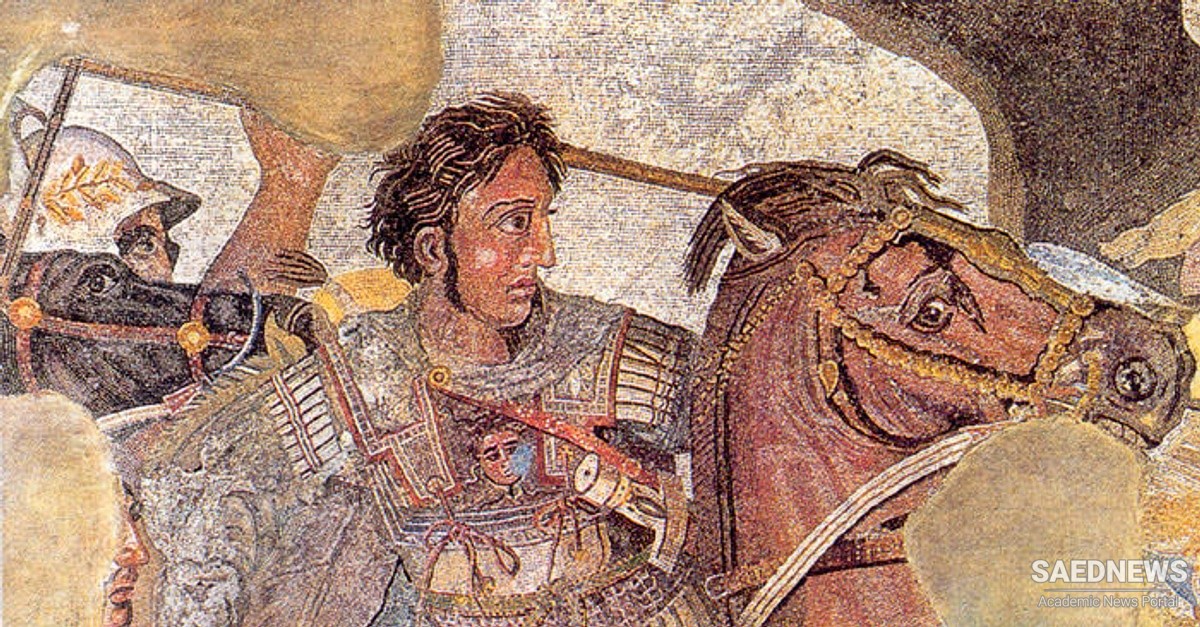He built two palaces, both in ancient cities of southwest Iran. He built his winter palace at Susa and his summer palace at Persepolis, famous for its architecture and lavish beauty. Originally all Zoroastrian worship had been held outdoors around open fires. As foreign influences entered the Iranian Plain, however, probably in the fifth century b.c.e., people had begun to construct buildings so that they could hold their rituals in private.
After 200 years on the throne the Achaemenids were no longer as powerful as they had been. In Greece the king Alexander (356-323 b.c.e.) saw a chance to extend his empire by overcoming Persia. He attacked with a huge army and finally defeated the Persians under Darius III in 330 b.c.e. Alexander was ruthless in victory. He looted and burned the palace at Persepolis, stripping gold off the walls to finance his march across Persia. Although the rest of the world calls him “Alexander the Great,” to Zoroastrians he became Alexander “the accursed,” a name associated with Ahriman or Angra Mainyu, the evil spirit himself.
After Alexander’s death in 323 b.c.e. his empire was divided. In 320 b.c.e. Persia was handed over to Seleucus I. The Seleucids put up temples to their own Greek gods and tried to encourage Greek culture in Persia but their attempts were mostly unsuccessful. The Persians were fiercely proud and their hatred of the Greeks ran deep. In name the Greeks ruled Persia, but in practice people regathered in tribes, and many small kingdoms emerged. The Greek religion never replaced Zoroastrianism, which seemed, if anything, to grow stronger. Preoccupied with wars in Egypt and other parts of the Middle Eastern world, the Seleucids gradually lost control of the vast Iranian land. By 250 b.c.e. their influence was failing. The Parthians, an Iranian tribe to the north near the Caspian Sea, declared themselves a separate state. They raised an army and defended themselves successfully against Seleucid attempts to subdue them.
he Parthian ruler Mithridates I gradually gained control over all the Seleucid holdings in Persia during the second century b.c.e.. His son Mithridates II extended his rule into India to the east and as far as Syria to the south and west. The Parthians considered themselves the heirs of the Achaemenids. Like the Achaemenids they practiced Zoroastrianism. They reconstructed fire temples that were destroyed by Alexander. In the oil-rich ground of the north, fire often occurred naturally, springing as if miraculously from the ground. The Parthian priests declared such places sacred and held fire rituals there. Greek influence waned. By now Zoroastrianism, already well over 1,000 years old, was well established all across Persia among the ordinary people as well as in the ruling establishment.


 Zoroastrianism and Ancient Persia's Path to Civilization
Zoroastrianism and Ancient Persia's Path to Civilization














































